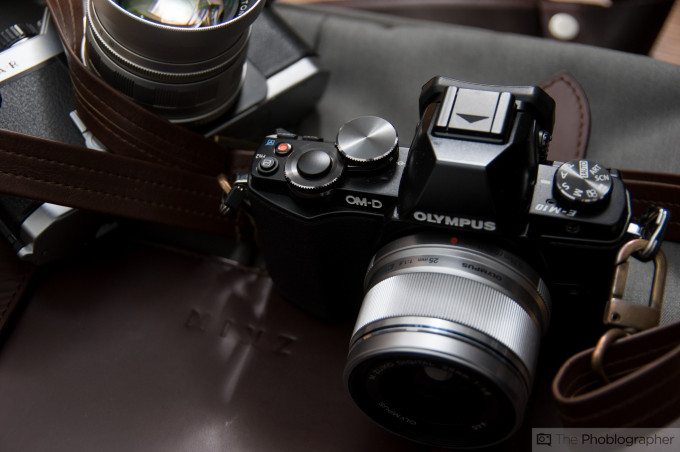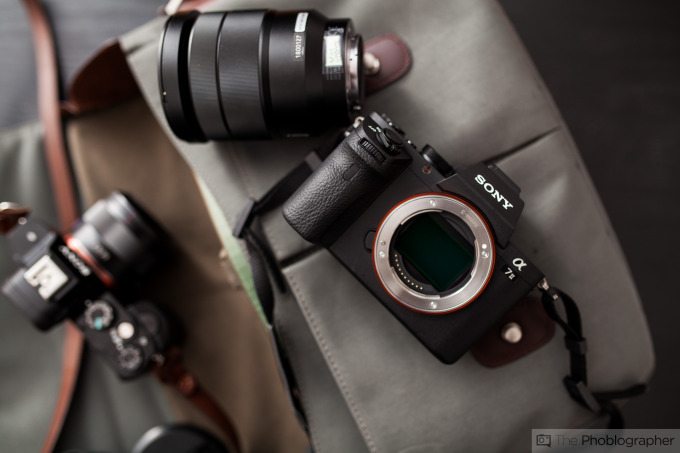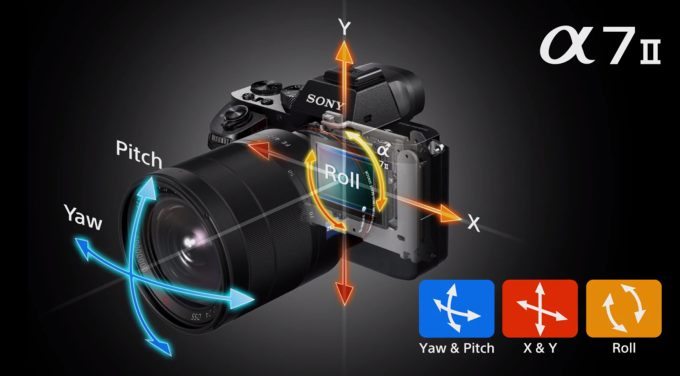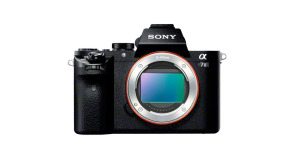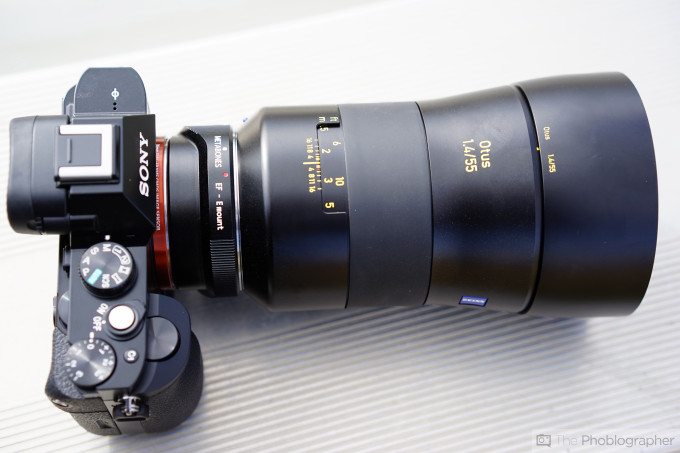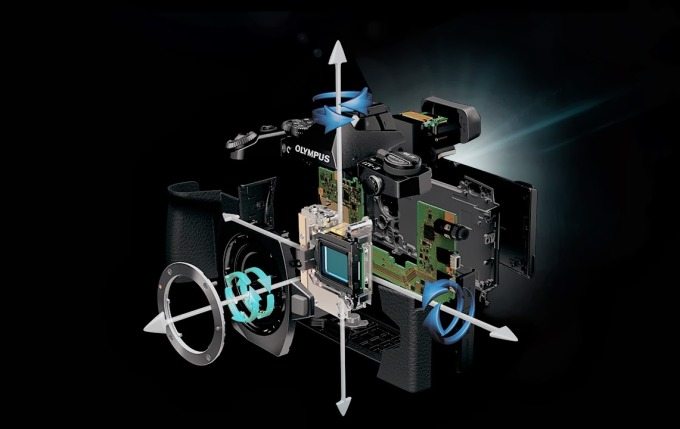Last Updated on 05/25/2023 by StateofDigitalPublishing
Sony and Olympus entered a gentleman’s agreement years ago to start collaborating in closer ways. With the latest announcement of the Sony A7 Mk II, it’s easy to believe that they have the same stabilization process. For many years now, Olympus has held the honor of having the best in-body image stabilization that we’ve seen. Indeed, whenever I need to shoot in impossibly low light, the camera that I reach for is my OMD EM5 paired with a Voigtlander 17.5mm f0.95 lens to shoot at very slow shutter speeds and with the lens wide open. Due to the depth of field and size of the sensor, shooting at f0.95 gives me the full frame equivalent of f2 in focus.
In a situation like that, technology like this could be very advantageous. But that isn’t a reason to discount what Sony is doing with its new 5 Axis Stabilization.
Introduction
At a recent media excursion with Sony, we were given a presentation on how their sensor stabilization works. For starters, Sony stated that it needed to develop a brand new system independent of Olympus’s for many reasons–but the most notable reason has to do with the fact that Olympus’s system was developed for the Micro Four Thirds world. Sony’s would need to be developed for a full frame system and in order to do this, the company pulled engineers from many parts of its company to develop the technology.
Stabilizing a full frame sensor takes a lot more work than it would for a Four Thirds sensor–and that’s why Sony developed the system that they did.
However, both systems work very similarly.
Sony
Sony’s system is developed to correct for correcting camera shake on a number of different planes. There are the X&Y axis and the roll that the camera needs to compensate for. But there is also another called Pitch and Yaw that lenses usually compensate for. An occurrence of Pitch and Yaw happens if a photographer focus and recomposes–which is a very viable and reliable method with Sony’s system due to the AF Lock-on ability combined with the Autofocus tracking setting. Indeed, it allows you to use the center focusing point (the way many photographers did back in the film days), lock onto a subject, and recompose with the camera effectively tracking the subject through the frame. I’ve seen it done best on the A7s and the A7.
In a phone call with Sony’s Mark Weir, we were educated on how an in-body image stabilization technique can work in a more superior way than what an in-lens technique can do. Mr. Weir, when talking about his company’s system, said, “It compensates for pitch and yaw, x and y translation, and roll…it’s the world’s first for a full frame sensor system.”
So how does it work? According to Mr. Weir, it’s primarily magnetic repulsion in nature. The system works with ball bearings and sensors that detect movement and then move the sensor accordingly to stabilize the image.
The Sony system works with all lenses.
“It needs focal length and focal distance to provide the correct image stabilization,” Mr. Weir said. “This is standard with everyone’s system as far as we understand it.”
However, the way that it works is totally different for lenses that can communicate with the camera and those that cannot.
“If the lens can communicate the information to the system and the system can understand it, then the system can provide all of the stabilization information,” said Mr. Weir. “In the case that the lens does not provide electronic communication, the user can manually enter in the focal length.”
But in that case, the camera can still only have the focal length input, and not the focal distance–which has to do with how far away from the sensor the lens is. From the focal length information, it can figure out the right amount of pitch and yaw to provide. However, roll compensation doesn’t require any information from the lens because it is always available. Roll compensation is all based on how the user moves the camera around as you can see in the graph above.
“The behavior of the system is largely dependent on the lens. The lens bears a responsibility if it’s going to enjoy five axis stabilization. It needs to provide focal length and focal distance to the system. But we put in a provision for you to manually put in the focal length. But you cannot put in focus distance. We thought that would be pretty cumbersome.”
There are few A-mount lenses that do not communicate focal length distance, and Mr. Weir specifically spoke about a lens that Minolta made years ago with a bellows for Macro work.
So what lenses will this be most problematic with? According to Mr. Weir, it’s all about the old rangefinder glass.
“The notion of a third party lens enjoying third party stabilization in the camera is unlikely,” Mr. Weir said. “If it is not electrically prepared to communicate focus distance to the camera and translates it into a way that the camera understands, then five axis stabilization can’t happen.”
Specifically, he pointed out Leica and Voigtlander lenses because the chances of their having an electrical encoder is quite slim.
“It’s moving the rangefinder with a mechanical interface.”
Not to pick on just those companies, but many other offerings from Rokinon and Samyang also do not communicate with the camera body at all.
But what about E-mount lenses with image stabilization already built in? In situations like this, the camera and lens work together. Pitch and Yaw will be handled by the lens while the camera will do the rest. If one were to use a Metabones adapter with a Canon 70-200mm f2.8 L IS II, then something very interesting occurs. Mr. Weir tells us that the camera doesn’t know that the lens has IS, nor does the lens know that the camera is trying to provide stabilization. In a case like this, Sony recommends turning off the lens stabilization to avoid overcompensation and in this case the camera will never have turned off pitch and yaw.
One of our biggest concerns had to do with battery life. But according to Mr. Weir there is no compromise in power consumption–in fact, he said that it is lower than that of the A7 while providing 4.5 stops of latitude.
Olympus
Olympus pioneered 5 Axis In-Body Image Stabilization technology and introduced it in their first OM-D model, the E-M5, in 2012. The company’s main difference from Sony has to do with the fact that Olympus’s system is responsible for stabilizing a smaller sensor, a four-thirds one to be precise. Otherwise, the system also incorporates roll in the same way that Sony states along with vertical, horizontal and compensation. But what Sony says is Pitch and Yaw is Olympus’s Tilting and Turning–as they state in the video below.
According to Olympus’s own website:
“Turning on the OM-D camera energizes a coil and magnet arrangement that causes the image sensor to float in magnetic suspension. This allows the image sensor to move freely, so it can be rotated or moved vertically or horizontally depending on the movement of the camera. It can also be used to compensate for the gentle vibration that occurs when the user is walking, such as when recording video.”
Richard Pelkowski, Product Manager for Olympus America stated that they were the first to employ VCM (Voice Coil Motor) actuation of the stabilizer unit–and talked about it quite a bit in an email response to questions on how their system works. In the video below, you can see how a two axis Voice Coil Motor system works by shifting back and forth. Part of this may have to do with Olympus’s sensor cleaning technology.
“Our 5 Axis IS units are presently utilized in the following current Olympus models: PEN E-P5 and OM-D E-M5 and E-M1,” Mr. Pelkowski wrote. “Our 3 axis IS units are utilized in the OM-D E-M10 and PEN E-PL7 and they also use VCM motor technology. For certain applications, VCM motor technology has advantages in speed, movement accuracy and power consumption over conventional DC motors or Piezoelectric motors.”
In fact, Olympus is also employing VCM motor technology to drive the focusing lens groups of its M.ZUIKO 12-4mm and M.ZUIKO 40-150mm PRO lenses.
Mr. Pelkowski confirmed that Sony’s 5 Axis IBIS technology is their own unique iteration of the technology, and that they didn’t work with Olympus on its creation.
“Sony’s 5 axis IS unit is similar to Olympus’ in that it is housed in the body as opposed to a lens, and that it compensates for camera movement in 5 directions.” Mr. Pelkowski wrote.
The Big Difference
So if both systems use magnets and cover essentially the same types of camera shake, what are the differences?
One of the biggest differences has to do with the fact that Sony’s system was designed for a full-frame sensor. Otherwise, the two are incredibly similar–except for video performance.
Indeed, while recording video, Sony’s five axis stabilization is said to work, but the full five axis stabilization doesn’t with Olympus’s system. Instead, it only works on three axes. Mr. Weir stated that he was asked about how the system stacks up against a gimbal for video.
Editor’s Correction: Olympus America clarified with us that five axis stabilization does indeed work for them in video mode–therefore making the systems even more identical in their functionalities.
After some thought, Mark said, “A gimbal is only understanding camera motion and is not collecting info from the lens. The correction at 20mm is much different than that of 200mm. That is something that camera stabilization systems can do that a gimbal cannot.”


